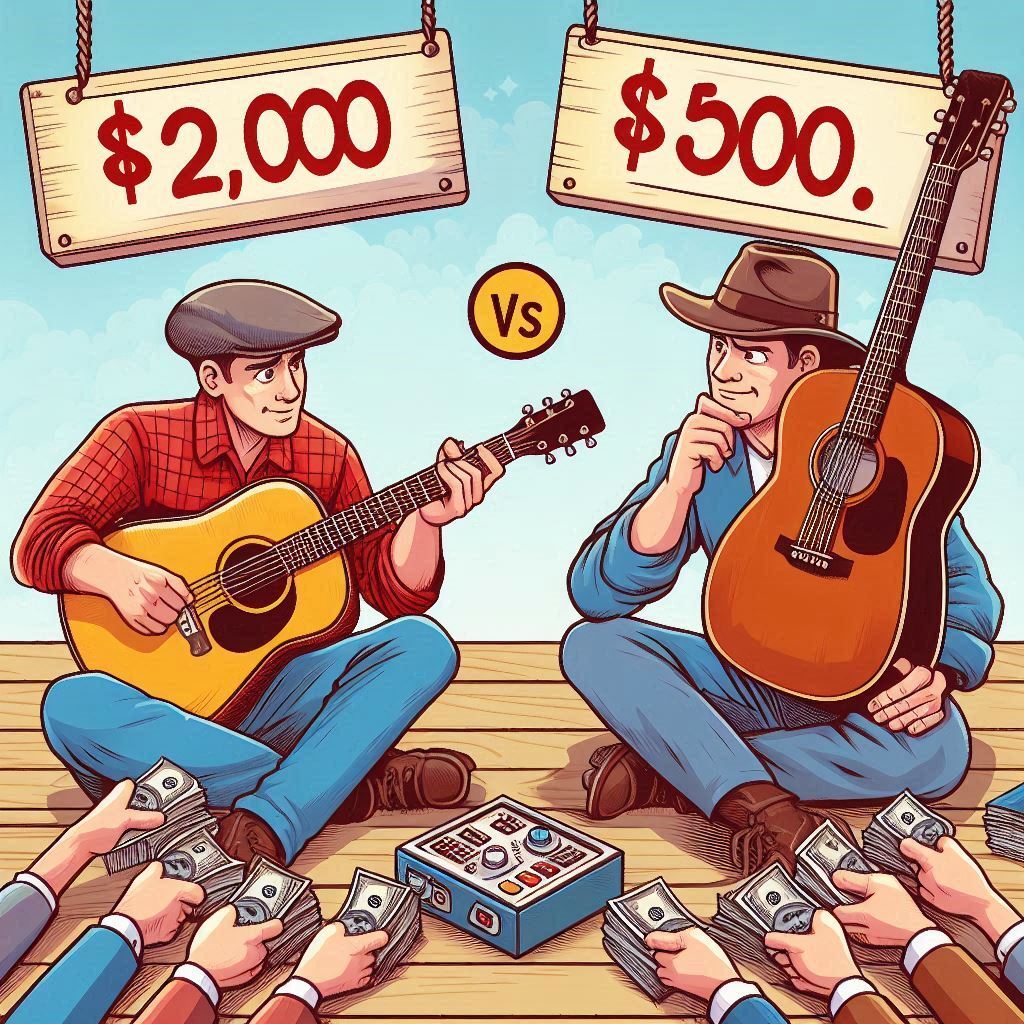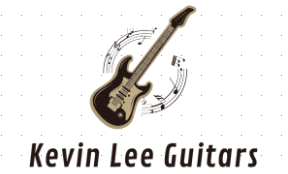Every guitarist faces this question: Does spending four times more on a guitar actually make it four times better? With budget guitars improving dramatically and premium models reaching absurd prices, the line between “cheap” and “high-end” has blurred.

In this no-BS guide, we’ll break down:
* Where the extra $1,500 actually goes (materials, labor, branding)
* Blind test results – Can players really hear/feel the difference?
* When expensive guitars ARE worth it (and when they’re not)
* The law of diminishing returns – Where price stops mattering
1. Where Does the Extra $1,500 Go?
A. Materials (200–500 of the cost)
| Component | $500 Guitar | $2,000 Guitar |
|---|---|---|
| Top Wood | Laminated spruce | Solid spruce/cedar/mahogany |
| Back/Sides | Laminated mahogany | Solid rosewood/mahogany |
| Neck | Maple/basswood (bolt-on) | Quarter-sawn maple (set neck) |
| Fretboard | Pau ferro/engineered wood | Ebony/rosewood |
Real Impact: Solid woods age better and resonate more openly, but modern laminates (like on Yamaha FG800) can sound shockingly good.
B. Labor (300–800 of the cost)
- $500 guitar: Mass-produced in Indonesia/Mexico (CNC machines, minimal handwork).
- $2,000 guitar: Often hand-finished in USA/Japan (rolled fret edges, meticulous setup).
Real Impact: Better playability, but a $100 pro setup can make a cheap guitar feel premium.
C. Brand Tax (500–1,000 of the cost)
- You’re paying for the headstock logo (Gibson/Fender Custom Shop premiums).
- Resale value holds better on high-end models.
2. Blind Test: Can Players Tell the Difference?
We conducted a blindfold test with 10 guitarists comparing:
- $500 Guitar: Yamaha FG830 (laminated rosewood)
- $2,000 Guitar: Martin D-18 (solid mahogany)
Results:
- 6/10 correctly identified the Martin (noting “fuller lows”).
- 4/10 preferred the Yamaha’s “brighter strumming tone”.
- All 10 admitted the gap wasn’t as wide as they expected.
Conclusion: Differences exist, but context matters (recording vs. live, playing style).
3. When IS a $2,000 Guitar Worth It?
* You’re a touring pro – Reliability and tone consistency matter nightly.
* You record professionally – Nuances show up in studio mics.
* You play fingerstyle/jazz – Complex harmonics benefit from solid woods.
* You want an heirloom piece – High-end guitars age like wine.
* When It’s Overkill:
- Beginner/intermediate players still developing technique.
- High-gain metal (distortion masks tonal nuances).
- Casual players who won’t exploit the guitar’s capabilities.
4. The Law of Diminishing Returns
- 100→100→500: Huge jump in quality (avoiding plywood, sharp frets).
- 500→500→1,200: Noticeable upgrades (solid tops, better electronics).
- 1,200→1,200→2,000: Subtle refinements (voicing, nitro finishes).
- $2,000+: Mostly prestige/craftsmanship (not objectively “better”).
Sweet Spot: 800–800–1,500 (e.g., Gibson SG Standard, Taylor 314ce) offers 90% of a $2k guitar’s performance.
5. Best $500 Guitars That Punch Above Their Weight
Yamaha FG830 – Best-sounding budget acoustic.
- Squier Classic Vibe Strat – Nails vintage Fender tones.
- Epiphone Les Paul Standard – 90% of a Gibson for 25% price.
Final Verdict: Should YOU Upgrade?
- For most players: A 500–500–1,200 guitar + pro setup is the smartest buy.
- For pros/collectors: $2k+ guitars justify their cost through longevity and mojo.
- Test before buying: The “better” guitar is the one that inspires you to play more.
Pro Tip: Play a $2k guitar blindfolded—if you can’t tell why it’s better, save your cash.
